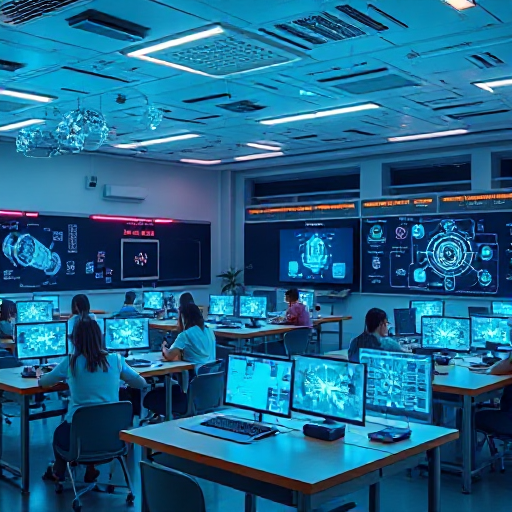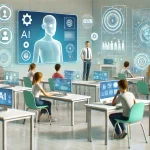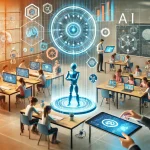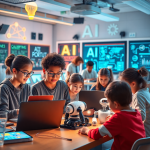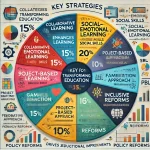
In today’s rapidly evolving world, education systems face mounting pressure to prepare students for jobs that don’t yet exist. Integrating AI and project-based learning (PBL) into the curriculum can bridge the widening gap between traditional education and industry demands. Educators can empower learners to thrive in an increasingly complex, AI-driven world by adopting a future-ready approach.
Why Future-Proofing Education Matters
The Importance of Future-Proofing Education
Future-proofing education ensures that students gain skills and knowledge relevant to the changing job market. The rise of AI and automation is transforming industries, making it crucial for educational institutions to adapt and evolve. Traditional rote learning no longer suffices; instead, fostering creativity, critical thinking, and adaptability is paramount.
The Role of AI in Modern Education
AI in education is more than just a buzzword. It encompasses:
- Personalized Learning: AI-powered tools like adaptive learning platforms tailor educational content to individual needs, enhancing comprehension and retention.
- Efficient Administrative Processes: Automating tasks such as grading and attendance tracking allows educators to focus more on teaching.
- Enhanced Student Engagement: AI-driven gamification and interactive tools make learning more engaging and accessible.
For example, tools like Duolingo and Carnegie Learning use AI to provide personalized feedback, helping students learn at their own pace.
Project-Based Learning as a Skill Development Tool
Project-based learning shifts the focus from passive absorption of information to active, hands-on problem-solving. Key benefits include:
- Real-World Application: Students work on projects that mimic real-world challenges, fostering practical skills.
- Collaboration and Communication: PBL encourages teamwork and effective communication.
- Critical Thinking and Creativity: Tackling open-ended problems nurtures innovative thinking.
Educators can draw inspiration from initiatives like the Buck Institute for Education, which champions PBL as a transformative teaching strategy.
How to Align Education with Industry Demands
Bridging the Gap Between Education and Industry
The disconnect between academic curriculum and industry demands often leaves graduates unprepared for the workforce. Integrating AI and PBL addresses this gap by:
- Aligning Curriculum with Market Needs: AI can analyze job market trends to inform curriculum design.
- Developing Soft and Hard Skills: PBL simultaneously fosters teamwork, adaptability, and technical expertise.
- Encouraging Lifelong Learning: Emphasizing problem-solving and self-directed learning prepares students to adapt to future challenges.
Steps to Build a Future-Ready Curriculum
- Leverage AI Insights: Use AI tools to identify in-demand skills and design relevant courses.
- Integrate PBL Across Disciplines: Ensure every subject incorporates project-based elements to enhance learning outcomes.
- Partner with Industry Leaders: Collaborate with companies to create internship opportunities and real-world projects.
- Provide Teacher Training: Equip educators with the skills to use AI tools and facilitate PBL effectively.
Challenges in Adopting AI and PBL
Addressing the Challenges of Integration
While promising, integrating AI and PBL comes with challenges:
- Resource Limitations: Investing in AI tools and training can be costly. Solution: Seek grants and partnerships.
- Resistance to Change: Educators may resist new teaching methods. Solution: Offer comprehensive training and support.
- Equity Issues: Not all students have access to AI-driven tools. Solution: Implement policies to bridge the digital divide.
The Future of Education
The Road Ahead: Preparing for a Dynamic Future
To remain relevant, education must evolve alongside technological advancements. By integrating AI and project-based learning, institutions can:
- Equip students with the skills needed for a dynamic workforce.
- Foster a culture of innovation and adaptability.
- Build a bridge between academia and industry, ensuring graduates are future-ready.
Conclusion
Integrating AI and project-based learning is not just a trend but a necessity for future-proofing education. By adopting these strategies, educators can prepare students to thrive in an AI-driven world, bridging industry gaps and building a curriculum that stands the test of time. The future of education lies in its ability to adapt and innovate—starting today.
- Buck Institute for Education: Learn more about project-based learning resources and strategies.
- Carnegie Learning: Explore AI-driven personalized learning solutions.
- Duolingo: Discover AI-powered language learning tools.

